Guides
How to Train a Cat to Use the Toilet

As a cat owner, I’ve always dreamed of a world where litter boxes are a thing of the past. Imagine a clean, odor-free bathroom, devoid of scattered litter and the constant chore of scooping.
Well, my friends, that dream can become a reality. In this article, I’ll guide you through the step-by-step process of training your feline companion to use the toilet.
With a little patience and perseverance, you’ll soon bid farewell to the litter box and say hello to a more convenient and hygienic way of life.
Key Takeaways
- Toilet training eliminates the need for a litter box and reduces associated odor and litter tracking.
- Choosing the right method, whether gradual transition or litter-free, is essential for successful training.
- Preparing the cat and the bathroom for toilet training involves gathering necessary tools and creating a comfortable environment.
- Litter box alternatives, such as toilet training kits, offer convenience, cleanliness, and long-term cost savings.
Step 1: Understanding the Benefits of Toilet Training for Cats
First, you should understand the benefits of toilet training your cat. While it may seem like a daunting task, the rewards are worth it.
One of the main benefits is eliminating the need for a litter box. This not only saves you the hassle of cleaning it regularly, but also eliminates the odor associated with traditional litter boxes.
Additionally, toilet trained cats are less likely to track litter throughout your home, keeping it cleaner and more hygienic.
Another advantage is the cost savings. By eliminating the need for litter, you can save a significant amount of money over time.
Lastly, toilet training can help address certain toilet training challenges, such as cats refusing to use the litter box or experiencing litter aversions. By using litter alternatives, such as specially designed toilet training kits, you can overcome these challenges and successfully train your cat to use the toilet.
Step 2: Choosing the Right Toilet Training Method for Your Cat
Next, you’ll want to select the most suitable method to teach your furry friend to use the bathroom. Choosing the right method is crucial for successful toilet training.
There are a few different approaches you can consider. One option is the gradual transition method, where you start by placing a litter box on top of the toilet and gradually raise it over time. Another option is the litter-free method, where you use a specialized training seat that fits onto the toilet bowl.
Whichever method you choose, it’s important to track your training progress. Keep a record of your cat’s successes and setbacks to identify any patterns and make necessary adjustments. By monitoring your cat’s progress, you can ensure a smooth and effective toilet training experience.
Now, let’s move on to step 3: preparing your cat and the bathroom for toilet training.
Step 3: Preparing Your Cat and the Bathroom for Toilet Training
When it comes to toilet training your cat, there are a few alternatives to the traditional litter box that you can consider. I will discuss these options in detail and provide insights on their pros and cons.
Additionally, I will explain the training tools you will need to successfully teach your cat to use the toilet, such as training seats and treats.
Lastly, I will share tips on how to set up your bathroom to create a comfortable and inviting environment for your cat during the toilet training process, including suggestions on litter placement and odor control.
Litter Box Alternatives
If you’re looking for an alternative to the traditional litter box, consider using a toilet training kit for your cat. Not only does it eliminate the need for litter and the hassle of cleaning the box, but it also provides a more hygienic option for your furry friend.
Here are four reasons why a toilet training kit may be a great choice for your cat:
-
Convenience: With a toilet training kit, you can say goodbye to scooping litter and dealing with unpleasant odors. Simply flush and move on with your day.
-
Space-saving: No more bulky litter boxes taking up precious floor space in your home. A toilet training kit allows you to utilize your existing bathroom fixtures.
-
Cost-effective: While initial investment may be higher, in the long run, you’ll save money on purchasing litter and cleaning supplies.
-
Regression prevention: If you have an older cat who is experiencing toilet training regression, a toilet training kit can help reinforce good habits and alleviate any issues they may be having.
Overall, toilet training kits offer a practical and efficient alternative to traditional litter boxes, making them a worthwhile consideration for any cat owner.
Training Tools Needed
One essential tool you’ll need for toilet training a cat is a toilet training kit. These kits usually include a special training seat that fits on top of your toilet, along with step-by-step instructions on how to train your cat to use the toilet.
There are different training methods you can use, such as gradually raising the litter box height and introducing the training seat, or using a special training disc that fits inside the toilet bowl.
Toilet training your cat offers many benefits, including eliminating the need for a litter box, reducing odors, and saving money on litter. It also eliminates the hassle of cleaning and maintaining a litter box.
With the right tools and training methods, your cat can become a pro at using the toilet in no time.
Now, let’s move on to some bathroom setup tips to ensure successful toilet training.
Bathroom Setup Tips
Setting up your bathroom properly is crucial for successful toilet training. Here are four tips to create an ideal environment for your cat’s toilet training progress:
-
Remove distractions: Clear any clutter or items that may distract your cat during their bathroom time. A clean and calm space will help them focus on the task at hand.
-
Provide easy access: Ensure that the litter box or toilet seat adapter is easily accessible for your cat. This will encourage them to use it without any difficulties or obstacles.
-
Use consistent cues: Place the litter box or adapter in the same spot each time, and use consistent cues, such as verbal commands or visual markers, to signal bathroom time. This will help establish a toilet training schedule and reinforce the desired behavior.
-
Maintain cleanliness: Regularly clean the litter box or toilet seat adapter to keep the bathroom area fresh and odor-free. Cats are more likely to use a clean and inviting space.
By following these tips, you can set the stage for successful toilet training progress.
Now, let’s move on to the next step: introducing your cat to the toilet.
Step 4: Introducing Your Cat to the Toilet
Once your cat is comfortable using the litter box, you can start introducing them to the toilet. This step requires patience and consistency.
Begin by placing a special training seat on top of the toilet, designed specifically for cats. It is essential to make this transition slowly to avoid overwhelming your cat. Start by placing the litter box next to the toilet and gradually raise it to the same level as the toilet seat. This helps your cat associate the toilet with their bathroom routine.
Introduce rewards, such as treats or praise, to encourage your cat’s progress. However, accidents may happen during the training process. If your cat has an accident, remain calm, clean it up, and continue with the training. Remember, accidents are part of the learning process, and with time, your cat will successfully use the toilet.
Step 5: Teaching Your Cat to Use the Toilet Seat
After successfully introducing your cat to the toilet, it’s time to move on to the next step: teaching your cat to use the toilet seat. This is an important part of the toilet training progress as it helps your cat become familiar with the idea of eliminating waste in the toilet.
Here are some tips to help you in teaching cats new behaviors:
-
Start by placing a training seat on top of the toilet bowl. This seat has a hole in the middle, allowing your cat to balance comfortably.
-
Gradually remove the litter box from the bathroom, so your cat starts associating the toilet as the only place to eliminate waste.
-
Encourage and reward your cat each time they use the toilet seat. This positive reinforcement will reinforce the desired behavior.
-
Be patient and consistent in your approach. It may take time for your cat to fully adapt to using the toilet for elimination.
Now that your cat is comfortable using the toilet seat, let’s move on to step 6: gradually eliminating the litter box.
Step 6: Gradually Eliminating the Litter Box
As you continue the training process, you’ll need to gradually remove the litter box from the bathroom to encourage your cat to rely solely on the toilet for elimination. This gradual transition is an important step in teaching your cat to use the toilet independently.
Start by moving the litter box slightly further away from the toilet each day. You can place it in a nearby room or hallway as a temporary solution. This allows your cat to become accustomed to using the toilet without the presence of the litter box.
Once your cat is consistently using the toilet, you can completely phase out the litter box. Remember to be patient during this process and reward your cat with praise and treats for successful toilet usage.
With time and consistency, your cat will become a pro at using the toilet!
Step 7: Troubleshooting Common Toilet Training Issues
Eliminating outside the toilet and the fear of falling in are two common issues that cat owners may encounter when toilet training their feline friends.
When a cat eliminates outside the toilet, it could be due to a variety of reasons such as a lack of understanding or discomfort with the new setup. To address this, it is important to provide positive reinforcement and gradually transition the cat to using the toilet.
Additionally, some cats may develop a fear of falling in, especially if they have had a negative experience or lack confidence. This fear can be overcome through patience, reassurance, and the use of training aids such as a secure litter tray or a step-up platform.
Eliminating Outside the Toilet
To avoid accidents, it’s important to gradually transition your cat from eliminating outside the toilet to using the toilet itself. This process requires patience and consistency.
Here’s a step-by-step guide to help you through this stage of toilet training:
-
Minimize outside distractions: Create a calm and quiet environment in the bathroom where your cat can focus on using the toilet. Remove any toys, food bowls, or other distractions that may divert their attention.
-
Establish a training schedule: Set specific times throughout the day for your cat to use the toilet. Consistency is key in reinforcing the desired behavior. Start with shorter sessions and gradually increase the duration over time.
-
Use positive reinforcement: Reward your cat with treats or praise every time they successfully eliminate in the toilet. This positive reinforcement will help them associate the toilet with a positive experience.
-
Monitor progress: Keep track of your cat’s progress and adjust your training approach accordingly. If accidents occur, remain patient and continue with the training process. With time and consistency, your cat will eventually become comfortable using the toilet.
Fear of Falling in
Don’t worry, you’ll gradually help your cat overcome the fear of falling in the toilet. Cats can be naturally cautious creatures, and it’s common for them to feel anxious about using the toilet.
The key to overcoming this fear is to create a safe and positive environment for your cat. Start by placing a litter box next to the toilet, allowing your cat to get used to the idea of using the bathroom in that area. Gradually raise the litter box, using stable platforms or boxes, until it is at the same height as the toilet seat. This will help your cat feel more comfortable with the height and reduce their anxiety.
Building trust is essential in this process, so make sure to reward your cat with treats and praise every time they successfully use the litter box. With patience and consistency, your cat will soon conquer their fear and confidently use the toilet.
Conclusion
In conclusion, toilet training a cat may seem like a daunting task, but with patience and perseverance, it can be achieved. By understanding the benefits of toilet training and choosing the right method for your feline friend, you can successfully transition them from a litter box to the toilet.
Remember to prepare both your cat and the bathroom for the training process, and gradually introduce them to the toilet seat. With consistent training and troubleshooting any issues that may arise, you’ll soon have a toilet-trained cat, eliminating the need for a litter box altogether.
So why not give it a try and enjoy the convenience and cleanliness of a cat using the toilet?
With an impeccable eye for detail and a passion for bathroom-related, Ava leads our editorial team gracefully and precisely.
Under her guidance, Best Modern Toilet has flourished as the go-to resource for modern bathroom enthusiasts. In her free time, you might find Ava exploring antique shops and looking for vintage bathroom fixtures to add to her collection.
Guides
What Is the Controversy With Cottonelle

We, as worried customers, are facing a confusing controversy involving Cottonelle.
In this article, we aim to unravel the origins of this debate, delve into the complaints and concerns raised by consumers, and examine Cottonelle’s response and efforts to regain trust.
Additionally, we will explore the ethical and environmental considerations surrounding the brand.
By doing so, we hope to shed light on the impact this controversy has had on Cottonelle’s reputation and sales.

Key Takeaways
- Reports emerged about potential issues within Cottonelle’s supply chain, including concerns about sourcing of materials and ethical practices.
- Consumers raised concerns and complaints about inconsistent product availability, price gouging, and the brand’s use of virgin pulp contributing to deforestation.
- Cottonelle issued an apology statement, acknowledging the concerns and committing to addressing them promptly and effectively.
- The controversy has had a negative impact on Cottonelle’s reputation, leading to a loss of trust and credibility, as well as potential financial implications for the company.
The Origins of the Controversy
We frequently encounter questions about the origins of the controversy surrounding Cottonelle. To understand the roots of this controversy, it’s crucial to delve into two key factors: the supply chain and the impact of social media.
The controversy surrounding Cottonelle began when reports emerged regarding potential issues within its supply chain. Concerns were raised about the sourcing of materials and the ethical practices employed by the company. These reports gained traction on social media platforms, where users shared their concerns and criticisms, amplifying the controversy.
As social media platforms have become powerful tools for spreading information, the impact of public opinion can’t be underestimated. The combination of supply chain concerns and the amplification of these concerns through social media led to the origins of the controversy surrounding Cottonelle.
Consumer Concerns and Complaints
Consumer concerns and complaints have surfaced regarding Cottonelle due to various issues within its supply chain and ethical practices. These concerns have been amplified by the recent toilet paper shortage, which has left consumers searching for alternative brands.

Some of the main grievances raised by consumers include:
- Inconsistent product availability: Many consumers have reported difficulty in finding Cottonelle products in stores, exacerbating their frustration during the toilet paper shortage.
- Price gouging: Some consumers have accused Cottonelle of raising prices during the shortage, taking advantage of the high demand for toilet paper.
- Environmental impact: Several complaints have been made about Cottonelle’s use of virgin pulp, which contributes to deforestation. Consumers are seeking more sustainable alternatives.
It is important for Cottonelle to address these concerns and improve their supply chain transparency and ethical practices to regain consumer trust.
Cottonelle’s Response and Damage Control
To address the concerns and mitigate the damage caused by the controversies surrounding Cottonelle, the company has taken swift action.
In response to the social media backlash, Cottonelle issued an apology statement on their official channels. The company acknowledged the concerns raised by consumers and expressed their commitment to addressing them promptly and effectively. They emphasized their dedication to providing a high-quality product that meets the needs and expectations of their customers.

Cottonelle also assured their customers that they’ve implemented additional quality control measures to prevent similar incidents in the future. Furthermore, the company has actively engaged with consumers through various platforms, responding to individual complaints and offering solutions.
Ethical and Environmental Considerations
An important aspect to consider when discussing the controversy surrounding Cottonelle is the significant impact it has had on ethical and environmental concerns.
- Cottonelle’s sustainability practices have been called into question, as the brand sources its toilet paper from virgin wood pulp, which contributes to deforestation and habitat destruction. This raises concerns about the long-term viability of the forests and the species that depend on them.
- Additionally, the production of Cottonelle involves high water and energy consumption, contributing to environmental degradation and climate change.
- As consumers become more conscious of their environmental footprint, alternative options such as recycled toilet paper and bamboo toilet paper have gained popularity. These alternatives help reduce the demand for virgin paper and minimize the environmental impact of toilet paper production.
Considering these ethical and environmental considerations, it’s important for consumers to be aware of the choices they make and choose sustainable options that minimize harm to the environment.
Impact on Cottonelle’s Reputation and Sales
Considering the ethical and environmental concerns raised in the previous subtopic, Cottonelle’s reputation and sales have been significantly impacted.

The controversy surrounding Cottonelle’s use of virgin wood pulp in its toilet paper has led to a negative impact on the brand’s image. Many consumers who value sustainability and responsible sourcing have expressed disappointment and concern about the company’s practices. This has resulted in a loss of trust and credibility for Cottonelle, as consumers may now view the brand as environmentally unfriendly.
In addition to the impact on brand image, there are also financial implications for Cottonelle. With more consumers opting for eco-friendly alternatives, the company may experience a decline in sales as customers switch to brands that align with their values.
It’s essential for Cottonelle to address these concerns and take proactive steps to regain consumer trust and loyalty.
Frequently Asked Questions
What Are the Main Ingredients Used in Cottonelle Products?
The main ingredients used in Cottonelle products include water, cellulose, and a proprietary blend of cleansing agents. Alternative brands to Cottonelle include Charmin, Scott, and Seventh Generation.

Are There Any Alternative Brands to Cottonelle That Offer Similar Products?
There are several eco-friendly alternatives to Cottonelle toilet paper that offer similar products. When comparing the softness and durability of Cottonelle with other brands, it is important to consider individual preferences and needs.
Can You Provide Any Statistics on the Sales Performance of Cottonelle Before and After the Controversy?
Sales performance before the controversy showed promising growth, but after the controversy, there was a noticeable decline. The numbers painted a vivid picture of the impact the controversy had on Cottonelle’s sales.
Have Any Legal Actions Been Taken Against Cottonelle as a Result of the Controversy?
Legal actions have not been taken against Cottonelle as a result of the controversy. However, the brand has faced significant consumer backlash, with many expressing their concerns and dissatisfaction with the product.
How Has the Controversy Impacted the Overall Perception of the Toilet Paper Industry?
The controversy surrounding Cottonelle has had a significant impact on consumer trust and the overall perception of the toilet paper industry. It has had a negative effect on brand reputation and raised concerns about product quality and safety.

Conclusion
In conclusion, the controversy surrounding Cottonelle has sparked significant consumer concerns and complaints regarding the brand’s ethical and environmental practices.
Cottonelle’s response and damage control efforts have been under scrutiny, as they navigate the impact on their reputation and sales.
It’s crucial for the company to address these concerns and take proactive steps towards more sustainable and responsible practices to regain the trust of their customers.
With an impeccable eye for detail and a passion for bathroom-related, Ava leads our editorial team gracefully and precisely.
Under her guidance, Best Modern Toilet has flourished as the go-to resource for modern bathroom enthusiasts. In her free time, you might find Ava exploring antique shops and looking for vintage bathroom fixtures to add to her collection.
Guides
Why Can’t You Flush Toilet Paper in Turkey

Have you ever questioned why it’s not possible to flush toilet paper in Turkey? Well, get ready because we’re going to dive into the distinct plumbing system, environmental issues, and cultural practices that contribute to this interesting bathroom custom.
Join us as we uncover the practical alternatives for disposing of toilet paper and explore the fascinating reasons behind this age-old question.
Get ready to dive deep into the world of Turkish sanitation and discover a whole new level of bathroom etiquette.
Key Takeaways
- Turkish plumbing system cannot handle flushing toilet paper due to narrower and more prone to clogging pipes.
- Disposing of toilet paper in a separate bin helps maintain a clean and sanitary environment, minimizing strain on waste management infrastructure.
- Aging sewer systems in Turkey contribute to the ban on flushing toilet paper, as flushing can cause blockages and backups.
- Understanding cultural norms and historical roots is important in explaining the practice of not flushing toilet paper in Turkey.
Unique Plumbing Infrastructure
In Turkey, the unique plumbing infrastructure necessitates that we refrain from flushing toilet paper. This may seem unusual to those accustomed to the convenience of flushing away used toilet paper, but it’s a necessary practice in Turkey.
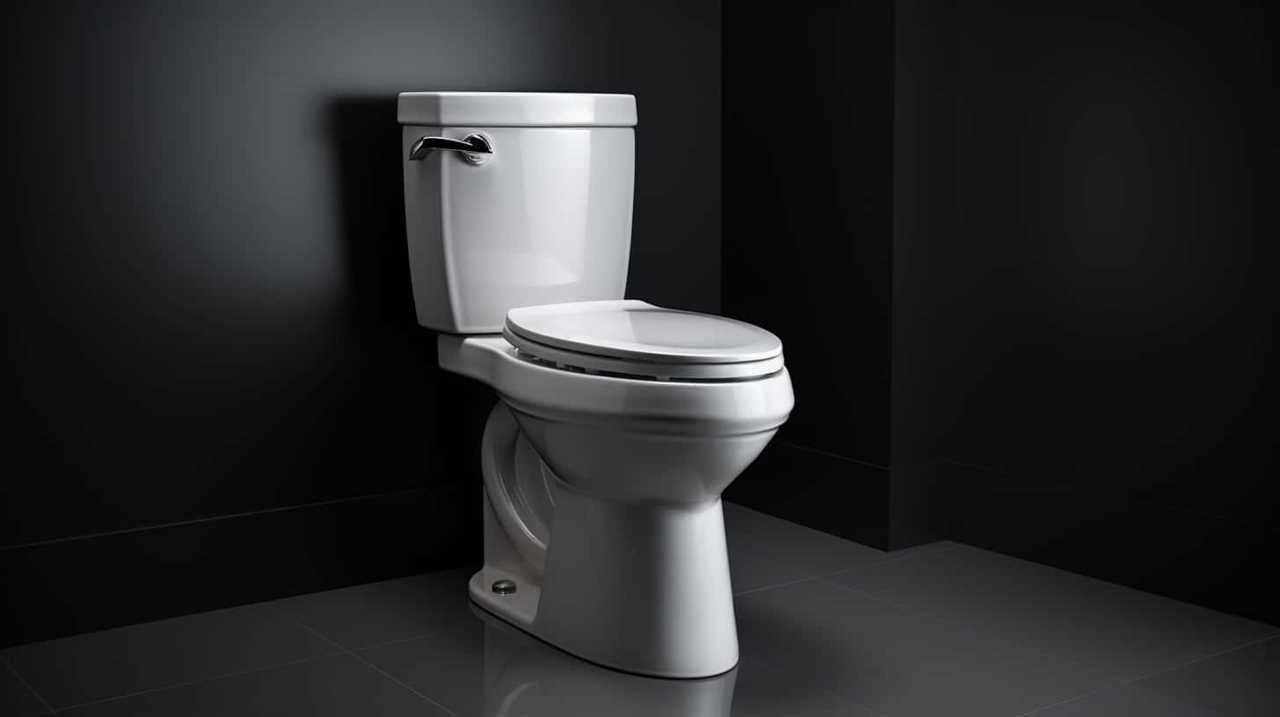
The reason behind this restriction lies in the country’s plumbing system, which isn’t designed to handle the disposal of toilet paper. The pipes in Turkey are narrower and more susceptible to clogging, and flushing toilet paper can lead to blockages and backups.
In the past, this issue was exacerbated by a toilet paper shortage, which further emphasized the need to find alternative solutions. However, with the advancements in technology and the availability of better toilet paper alternatives, such as wet wipes and bidets, the inconvenience of not being able to flush toilet paper has been mitigated to some extent.
Environmental Concerns
Additionally, we should consider the environmental concerns related to not being able to flush toilet paper in Turkey.
Waste management regulations play a significant role in this issue. When toilet paper is flushed, it can cause blockages in the sewage system, leading to costly repairs and maintenance.

By not flushing toilet paper, Turkey is able to minimize the strain on their waste management infrastructure, ensuring that it operates efficiently and effectively.
Furthermore, public health concerns also come into play. Flushing toilet paper can contribute to the spread of bacteria, viruses, and other harmful pathogens, posing a risk to public health.
By disposing of toilet paper in a separate bin, Turkey is able to mitigate this risk and maintain a clean and sanitary environment.
Aging Sewer Systems
As we delve into the issue of ‘Aging Sewer Systems’, it’s important to consider the impact of outdated infrastructure on the inability to flush toilet paper in Turkey. The aging sewer systems in the country face maintenance issues that contribute to this problem.
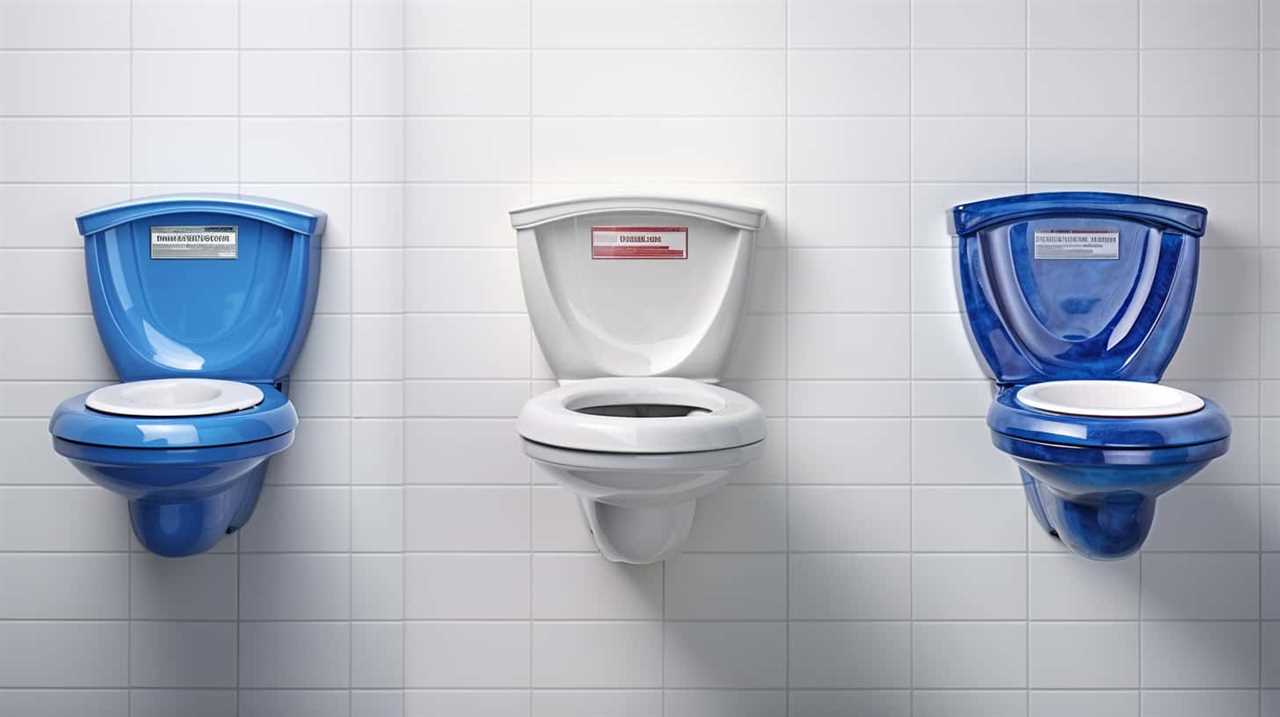
Over time, these systems deteriorate and become less effective in handling waste and transporting it to treatment plants. As a result, flushing toilet paper can cause blockages and backups in the sewer pipes. This not only creates inconveniences for individuals, but also poses a significant impact on public health.
The accumulation of waste in the sewer system can lead to the spread of diseases and contamination of water sources. Therefore, addressing the maintenance and modernization of aging sewer systems is crucial in ensuring the overall well-being of the population.
Cultural Norms and Hygiene Practices
To understand the reason behind the inability to flush toilet paper in Turkey, it’s important to explore the cultural norms and hygiene practices of the country.
In Turkey, there’s a social stigma associated with throwing toilet paper into the toilet. This belief has its historical roots, as older sewer systems weren’t designed to handle toilet paper and could easily get clogged. As a result, the practice of disposing toilet paper in a separate bin next to the toilet became the norm. This cultural norm and hygiene practice has been passed down through generations.

Understanding these cultural norms and historical roots is crucial in comprehending why flushing toilet paper isn’t a common practice in Turkey.
Now, let’s explore the practical alternatives for disposing toilet paper.
Practical Alternatives for Disposing Toilet Paper
Now, let’s explore our practical alternatives for disposing of toilet paper.
One option is to use reusable cloth instead of toilet paper. This involves using a piece of soft cloth to clean yourself after using the toilet, which can then be washed and reused. Reusable cloth is a more sustainable option as it reduces waste and eliminates the need for toilet paper.
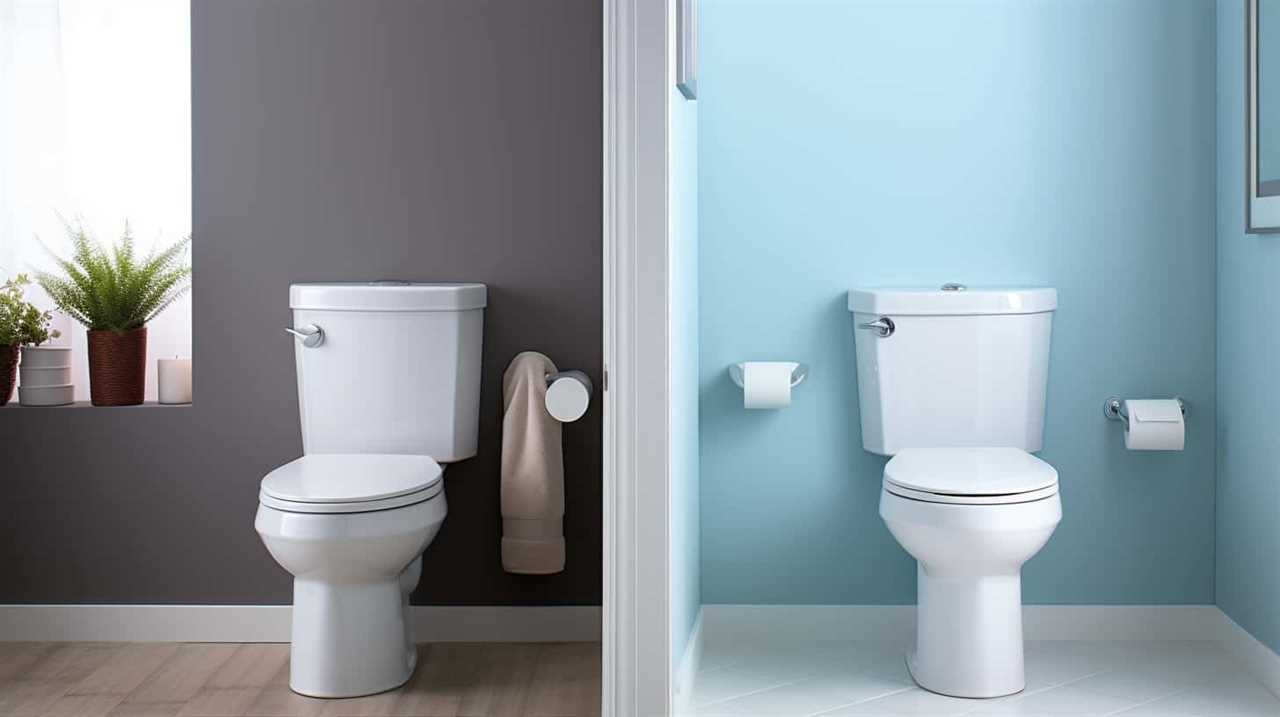
Another alternative is to use a bidet attachment. A bidet attachment is a device that can be installed on your toilet and sprays water to clean your bottom. This eliminates the need for toilet paper altogether. Bidet attachments are becoming increasingly popular due to their hygienic and eco-friendly nature.
Both reusable cloth and bidet attachments provide practical alternatives for disposing of toilet paper, reducing waste, and promoting sustainability.
Frequently Asked Questions
Are There Any Health Risks Associated With Not Being Able to Flush Toilet Paper in Turkey?
There are potential health implications and an environmental impact associated with not being able to flush toilet paper in Turkey. It’s important to properly dispose of it to prevent clogged pipes and maintain sanitation.
How Do Turkish People Dispose of Their Toilet Paper if They Can’t Flush It?
We can’t flush toilet paper in Turkey. Turkish people use alternative solutions like trash bins to dispose of it. This practice reduces environmental impact and prevents plumbing issues.
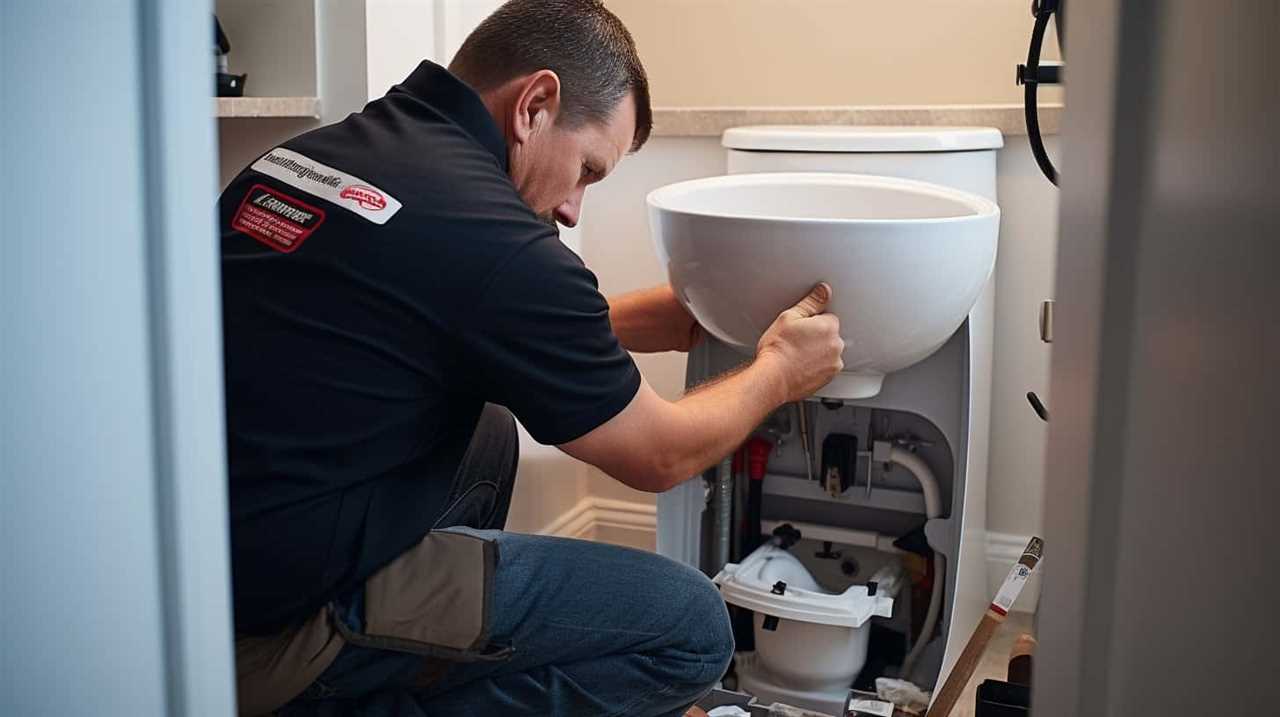
Are There Any Specific Regulations or Laws in Place Regarding the Disposal of Toilet Paper in Turkey?
There are regulations in place regarding toilet paper disposal in Turkey. Due to concerns about environmental impact, alternative methods are used. Flushing toilet paper can lead to plumbing issues, so it is important to follow the guidelines.
Are There Any Exceptions or Special Circumstances Where It Is Allowed to Flush Toilet Paper in Turkey?
In certain cases, such as when toilet paper alternatives are used, it may be allowed to flush toilet paper in Turkey. However, this can still have a negative impact on sewage systems.
Is the Inability to Flush Toilet Paper a Common Issue Only in Turkey or Are There Other Countries With Similar Restrictions?
In many countries, flushing toilet paper is common, but cultural differences can lead to restrictions. For example, in Turkey, it’s not allowed due to older plumbing systems and the environmental impact.
Conclusion
So, there you have it. In Turkey, the simple act of flushing toilet paper is a no-go.
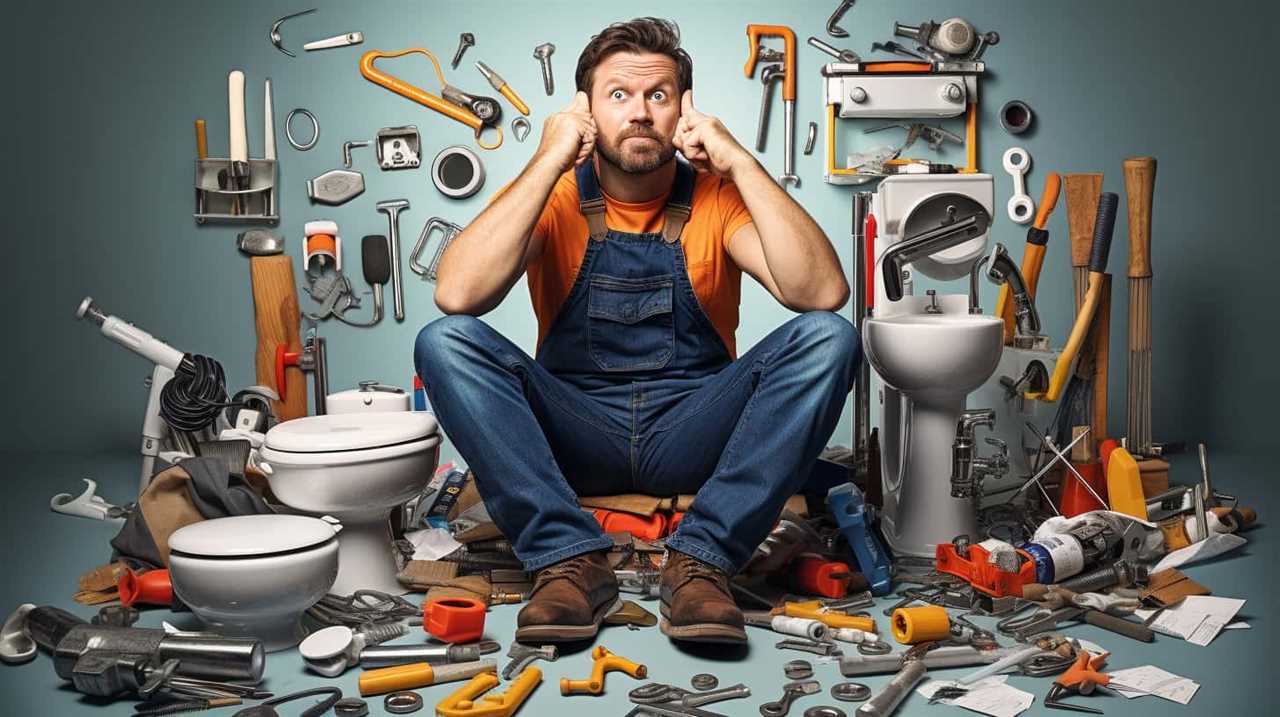
It’s a unique plumbing infrastructure combined with environmental concerns, aging sewer systems, and cultural norms that have led to this peculiar practice.
But fear not, dear traveler, for there are practical alternatives available.
Just remember, when in Turkey, do as the Turks do, and dispose of your toilet paper in the bin provided.
Happy flushing!

With an impeccable eye for detail and a passion for bathroom-related, Ava leads our editorial team gracefully and precisely.
Under her guidance, Best Modern Toilet has flourished as the go-to resource for modern bathroom enthusiasts. In her free time, you might find Ava exploring antique shops and looking for vintage bathroom fixtures to add to her collection.
Guides
How Can I Make My Dogs Poop Break Down Faster
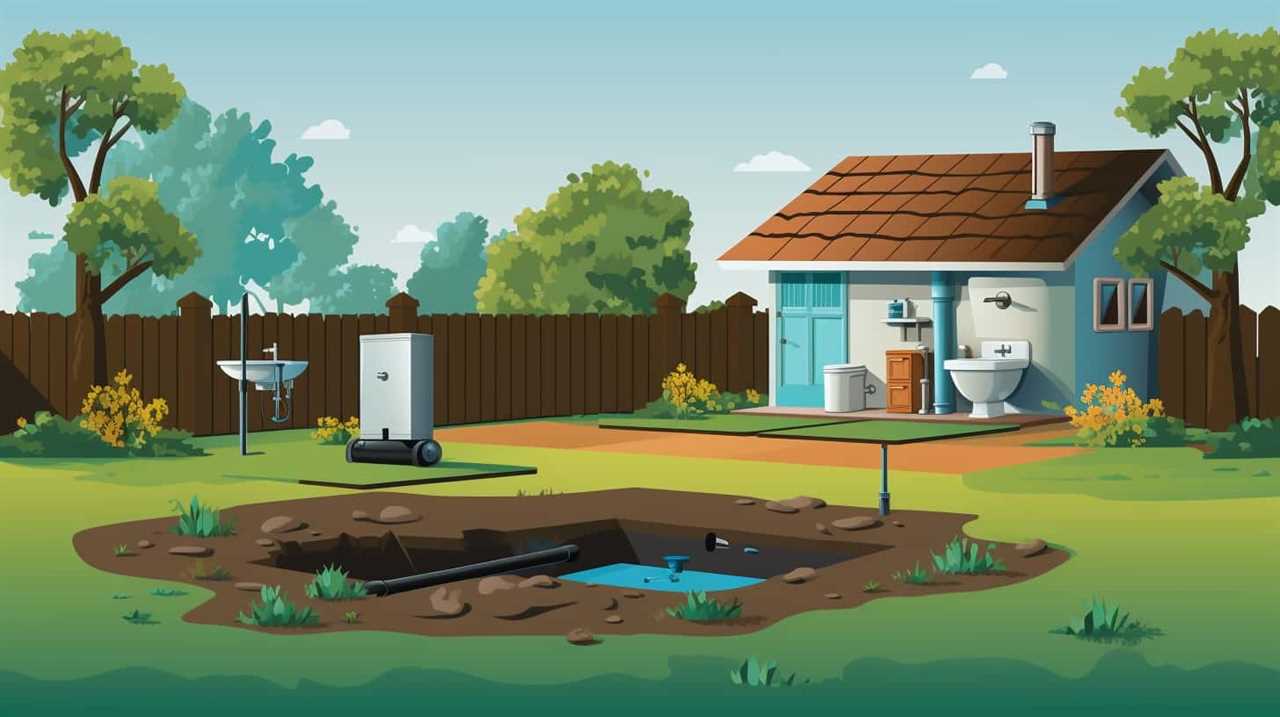
Are you aware that the average dog generates around 275 pounds of feces annually?
Finding ways to make this waste break down faster is essential for maintaining a clean and healthy environment. In this article, we will explore effective methods to speed up the decomposition of your dog’s poop.
By selecting the right diet, providing ample water, utilizing natural additives, and implementing proper yard maintenance techniques, you can ensure that your furry friend’s waste is disposed of more efficiently.
Key Takeaways
- A balanced and nutritious diet is crucial for proper digestion and faster breakdown of dog’s poop.
- Providing plenty of fresh water and encouraging hydration aids in digestion and regular bowel movements.
- Natural additives, such as enzymes, can speed up the decomposition of dog waste and make it easier to break down.
- Regularly cleaning and aerating the yard, along with considering composting methods, can effectively manage and repurpose dog waste.
Choose the Right Diet for Your Dog
To ensure optimal digestion and faster breakdown of your dogs’ poop, we should focus on choosing the right diet for them.
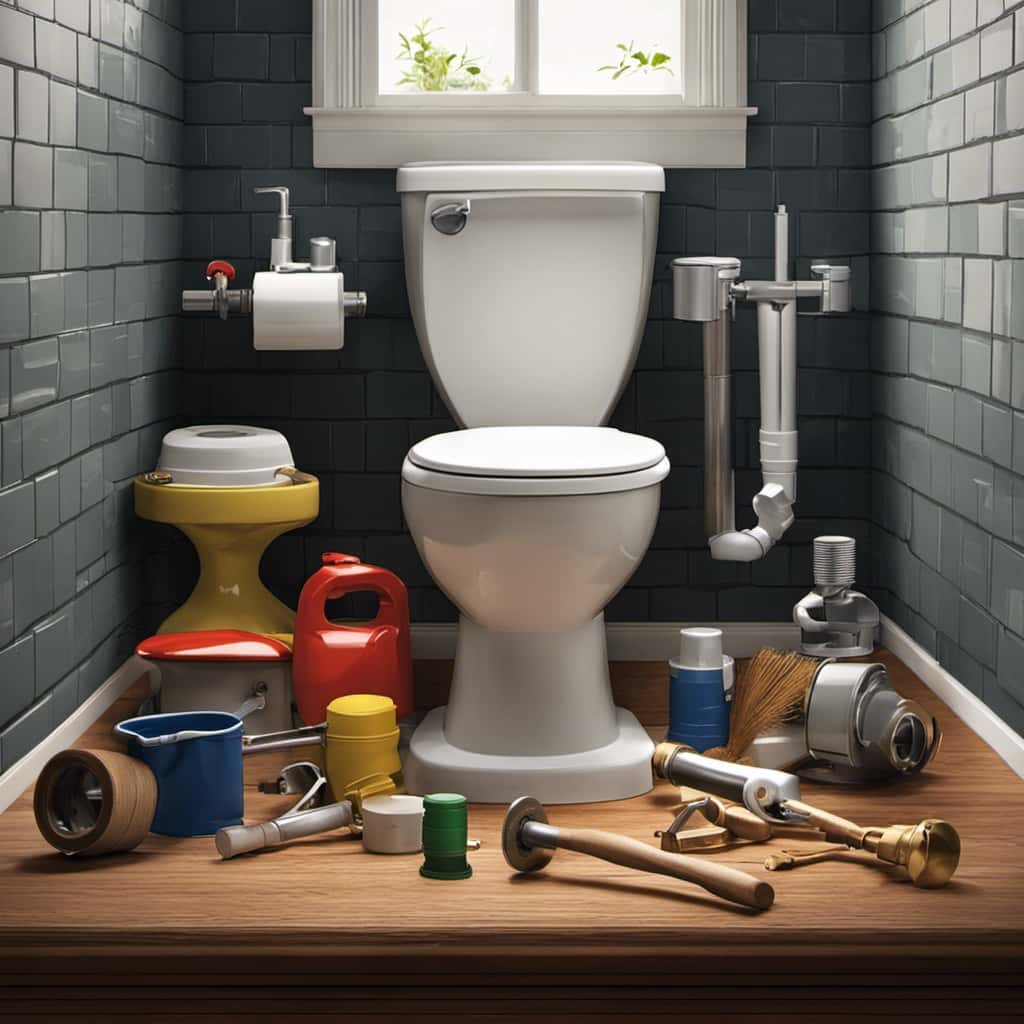
Dog nutrition plays a crucial role in their overall health and the quality of their poop. A balanced and nutritious diet is essential for proper digestion and nutrient absorption.
When selecting food for your dog, it’s important to consider their specific dietary needs based on factors such as age, breed, and activity level. High-quality dog food that contains a proper balance of proteins, carbohydrates, fats, vitamins, and minerals is recommended.
Additionally, dietary supplements can be beneficial in supporting your dog’s digestion and overall well-being. Consult with your veterinarian to determine which supplements are appropriate for your dog’s specific needs.
Remember that a well-balanced diet is key to ensuring optimal digestion and a faster breakdown of your dogs’ poop.
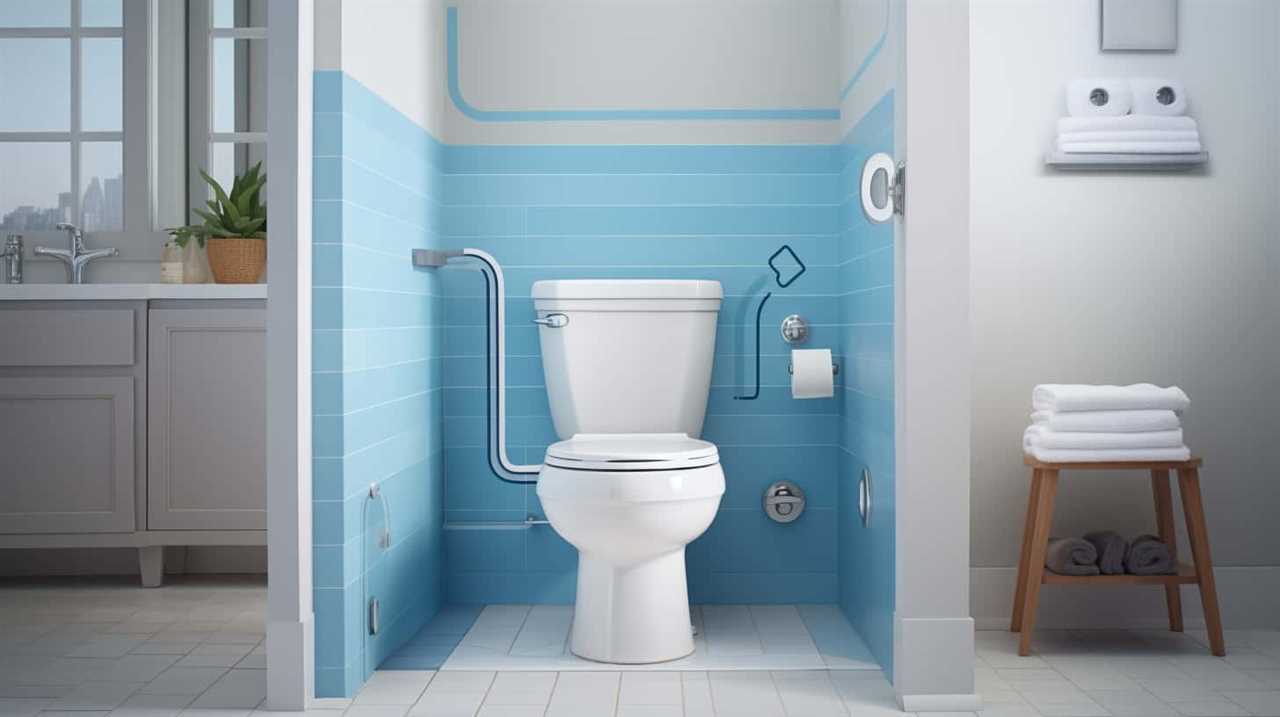
Provide Plenty of Water for Digestion
We should ensure that we provide an ample amount of water for our dogs’ digestion to promote optimal breakdown of their poop. Water plays a crucial role in promoting healthy gut bacteria and aiding in the digestion process.
Here are some key points to consider when providing water for your dog:
- Hydration: Make sure your dog has access to fresh, clean water at all times.
- Daily intake: Monitor your dog’s water intake and ensure they’re drinking enough to stay properly hydrated.
- Mealtime: Encourage your dog to drink water before and after meals to aid in the digestion process.
- Exercise routine: Incorporate a proper exercise routine to promote healthy digestion and encourage regular bowel movements.
Utilize Natural Additives to Speed up Decomposition
For faster decomposition of your dogs’ poop, incorporating natural additives into their diet is an effective approach. Using enzymes, bacteria, and microorganisms to aid decomposition can help break down the waste more quickly and efficiently.
Enzymes, such as cellulase and protease, can break down the complex organic compounds in the feces, making it easier for bacteria and microorganisms to decompose them. These natural additives can be found in certain pet foods or can be added as supplements to their diet.
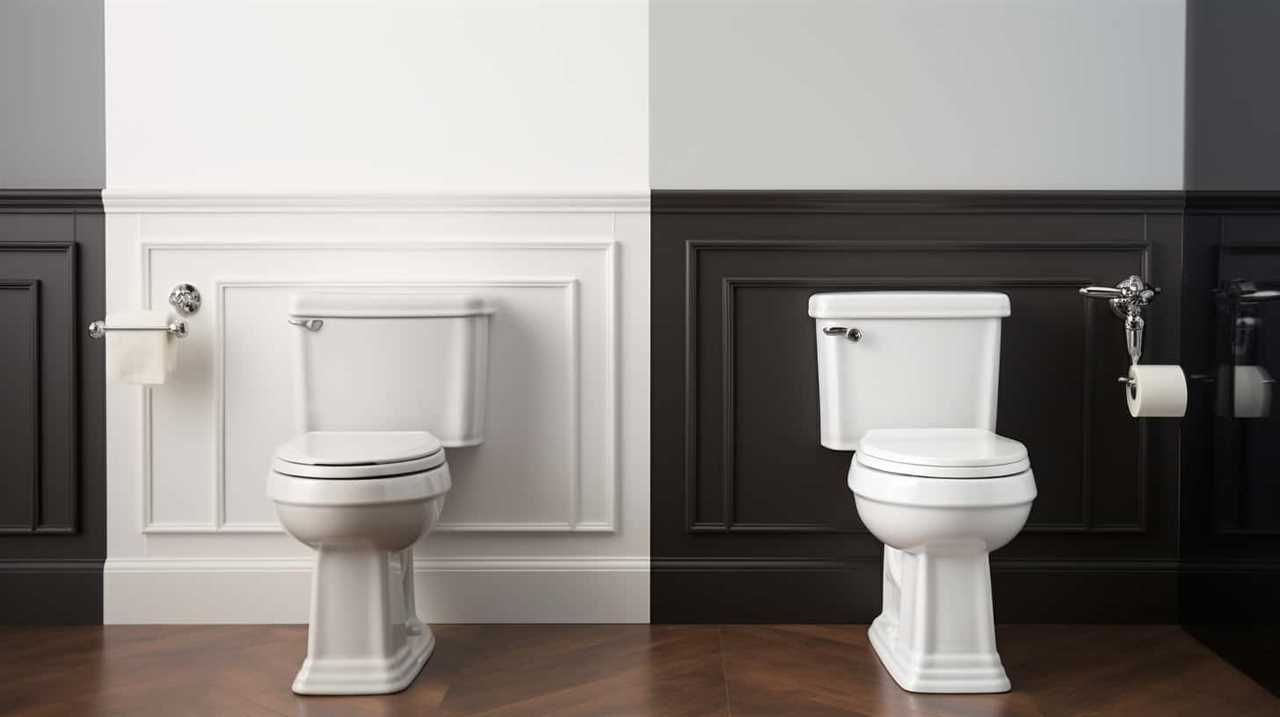
Additionally, the benefits of adding organic matter to the soil shouldn’t be overlooked. When the decomposed waste is used as fertilizer, it enriches the soil with nutrients, improves its structure, and promotes healthy plant growth.
Regularly Clean and Aerate Your Yard
Cleaning and aerating our yard regularly is essential for ensuring the efficient breakdown of our dogs’ poop. Proper lawn maintenance and pet waste management are crucial for maintaining a healthy and hygienic outdoor space.
Here are some key practices to follow:
- Remove any visible pet waste from the yard using a poop scoop or disposable bags.
- Regularly hose down the area where the waste was located to dilute any remaining residue.
- Aerate the soil by using a garden fork or aerator to create small holes. This allows for better oxygen flow and promotes the breakdown of organic matter.
- Consider using a natural enzymatic cleaner specifically designed for pet waste to further break down and eliminate any lingering odors.
Consider Using Composting Methods for Dog Waste
To enhance the breakdown process of our dogs’ poop, considering composting methods is a viable option. Composting dog waste not only helps to reduce the amount of waste that ends up in landfills but also provides a sustainable way to repurpose it as fertilizer.
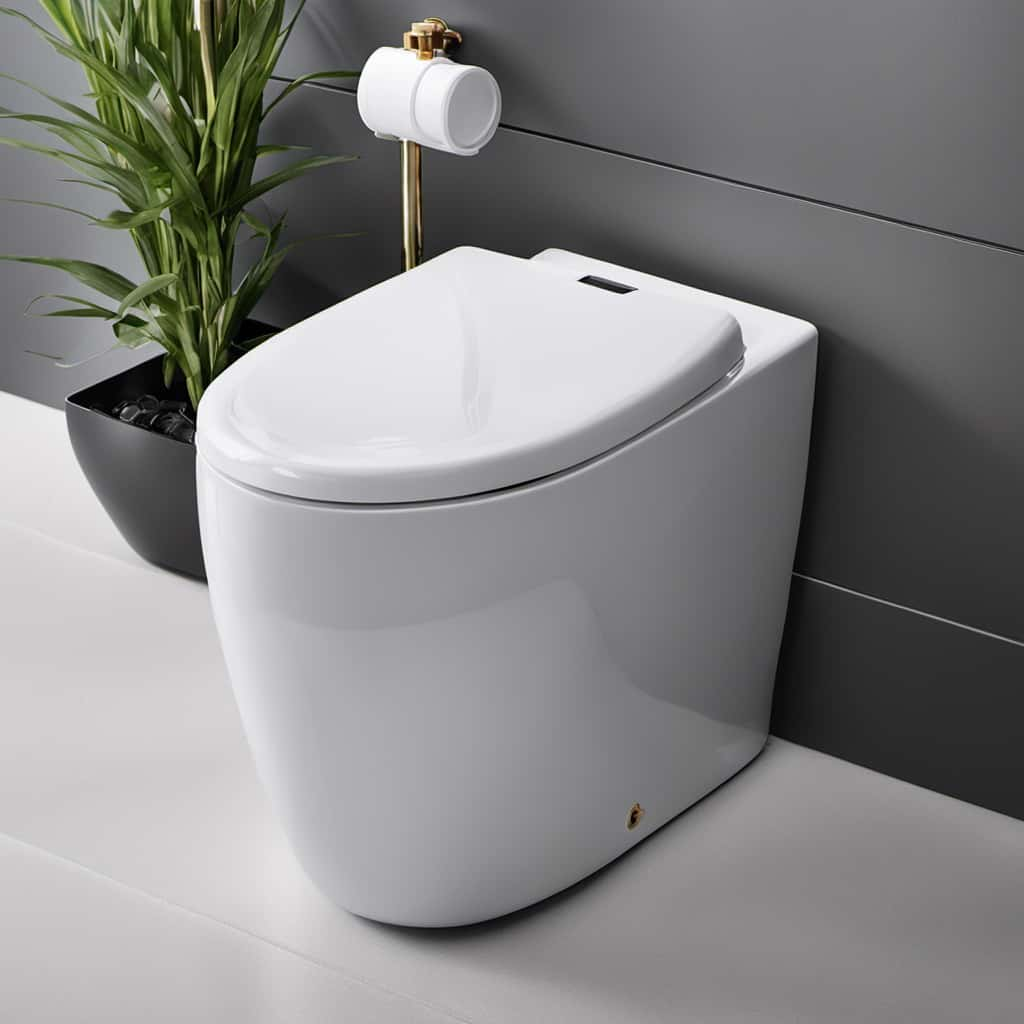
By creating a dog waste compost bin, you can effectively convert the waste into nutrient-rich compost that can be used in your garden or yard. To create a dog waste compost bin, choose a suitable location away from water sources and food crops.
Line the bin with a layer of straw or wood chips, and then add the dog waste, ensuring you mix it with other organic materials like grass clippings or leaves. Regularly turn the compost pile to provide oxygen and promote decomposition.
With time, the composting process will break down the dog waste, transforming it into a safe and natural fertilizer for your plants.
Frequently Asked Questions
How Often Should I Feed My Dog to Ensure Efficient Digestion and Quicker Poop Breakdown?
To ensure efficient digestion and quicker poop breakdown, we should consider the feeding frequency and types of dog food. By feeding our dogs the right amount of food at regular intervals, we promote proper digestion and help the poop break down faster.

Can I Use Artificial Additives or Enzymes to Speed up the Decomposition Process?
Yes, you can use artificial additives or natural enzymes to speed up poop breakdown. However, we recommend natural enzymes as they are safer and more effective, without the potential drawbacks of artificial additives.
Are There Any Specific Plants or Herbs That Can Aid in Breaking Down Dog Poop?
Specific plants or herbs that aid in breaking down dog poop naturally and speeding up decomposition include yarrow, comfrey, and horsetail. These natural remedies can help promote the breakdown of waste in an environmentally friendly way.
How Can I Prevent Odor and Flies in My Yard While Waiting for the Poop to Break Down?
To prevent odor and flies in our yard while waiting for poop to break down, we can use natural repellents and practice proper waste management. This will help maintain a clean and hygienic environment.
Is It Safe to Use Compost Made From Dog Waste on My Garden or Plants?
Using dog waste compost safely requires caution. Alternative methods for dog waste disposal include burying it in a designated area or using a dog waste collection service. These options minimize health risks and environmental impact.
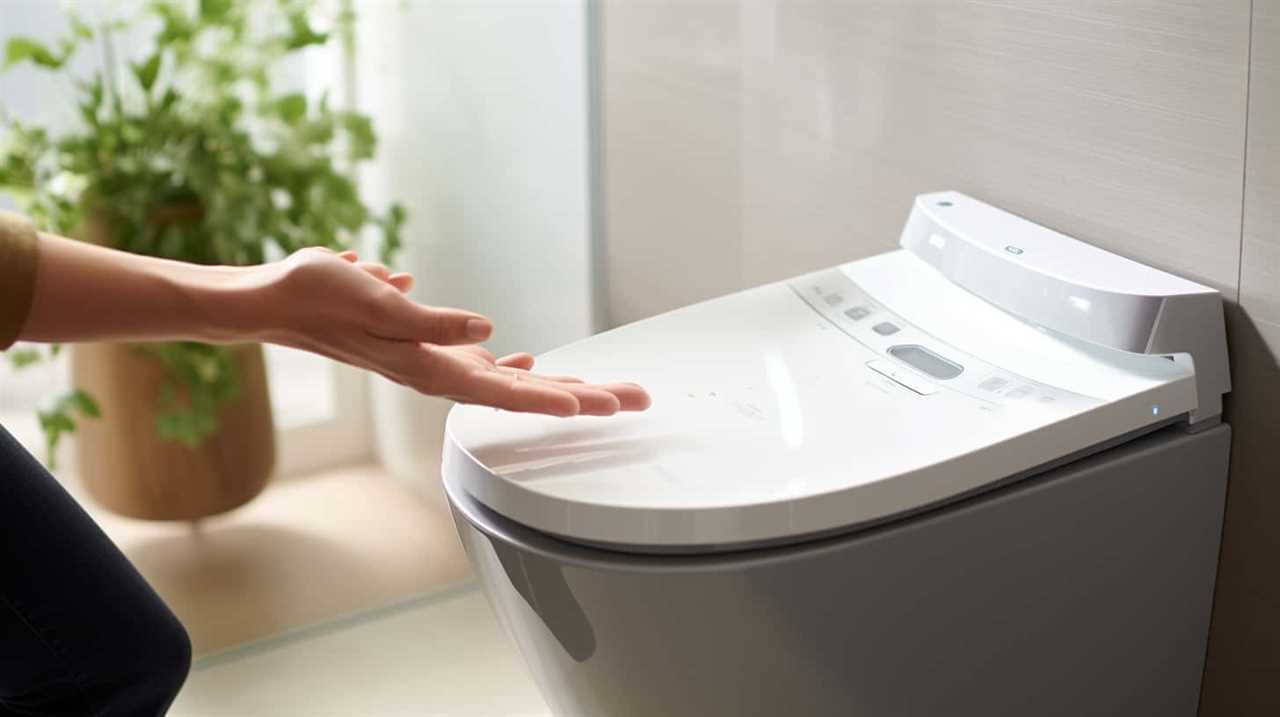
Conclusion
In conclusion, there are several ways to help speed up the decomposition of your dog’s poop:
- Choosing the right diet: Providing your dog with a balanced diet that is rich in fiber can help promote healthy digestion and make their waste easier to break down.
- Providing ample water: Keeping your dog hydrated is important for their overall health and can also help soften their poop, making it easier to decompose.
- Utilizing natural additives: Adding natural additives to your dog’s diet, such as pumpkin or probiotics, can help regulate their digestive system and promote efficient waste breakdown.
- Maintaining a clean yard: Regularly picking up your dog’s poop and keeping your yard clean can prevent the accumulation of waste, allowing for faster decomposition.
- Considering composting methods: If you have the space and resources, composting your dog’s waste can further aid in the breakdown process and help create nutrient-rich soil.
It’s important to prioritize the health and well-being of your furry friend, so consulting with a veterinarian for specific dietary and waste management recommendations is always recommended.
Together, we can create a cleaner and healthier environment for both our dogs and ourselves.
With an impeccable eye for detail and a passion for bathroom-related, Ava leads our editorial team gracefully and precisely.
Under her guidance, Best Modern Toilet has flourished as the go-to resource for modern bathroom enthusiasts. In her free time, you might find Ava exploring antique shops and looking for vintage bathroom fixtures to add to her collection.
-

 Reviews3 months ago
Reviews3 months agoBest Toilet Air Freshener: Top 10 Picks for a Fresh-Smelling Bathroom [2024]
-

 FAQ - Advanced Bathroom Queries2 months ago
FAQ - Advanced Bathroom Queries2 months agoWhich Countries Use Bidets the Most
-

 Reviews3 months ago
Reviews3 months agoBest Waterless Toilets: Top Options for Eco-Friendly Bathrooms [2024]
-

 Buying Guides3 months ago
Buying Guides3 months agoWhat to Do When You Accidentally Flushed Something Down the Toilet
-

 Reviews1 week ago
Reviews1 week agoLDian Smart Toilet Review [2024]
-

 Reviews3 months ago
Reviews3 months agoBest Toilet Enzyme Cleaners for Optimal Odor Control [2024]
-

 Reviews1 month ago
Reviews1 month agoKohler Innate Smart Toilet Review [2024]
-

 Reviews1 month ago
Reviews1 month agoKohler NUMI 2.0 Smart Toilet Review [2024]





















